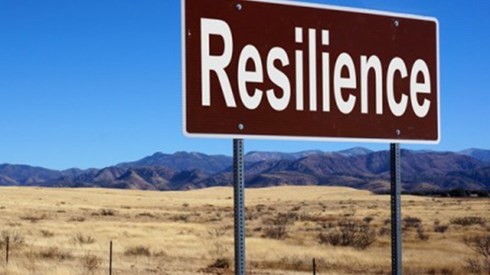Cat Bonds, Insurance-Linked Securities Show Resilience to Challenges

January 18, 2021

Alternative sources of capital, including catastrophe bonds and other types of insurance-linked securities (ILS), have played a growing role in securing coverage for various exposures in recent years.
Despite the impact of the COVID-19 pandemic and more frequent and severe natural catastrophes, the market continues to show resilience and growth.
In its Reinsurance Market Outlook released this month, Aon noted that even as events of recent years have tested investor appetite for insurance risk, one area of the alternative capital sector that continues to perform strongly is the property catastrophe bond market. Investors find the liquidity and peril-specific nature of property catastrophe bonds attractive, driving strong demand, Aon reported.
Aon reported that property catastrophe bond issuance reached a record $10.9 billion in 2020, while in its own report Artemis placed the figure even higher, reporting new issuance exceeding $11 billion.
In total, catastrophe bond and related ILS issuance reached a new record at $16.4 billion in 2020, according to the Q4 2020 Catastrophe Bond & ILS Market Report from Artemis.
Last year's catastrophe bond and ILS issuance was up $5.3 billion from 2019, according to the Artemis Deal Directory, while outstanding catastrophe bond and ILS volume also reached a record at year-end 2020 at $46.4 billion, according to Artemis.
Aon found that recent loss activity from high-frequency secondary perils has led property catastrophe bond investors to prefer per-occurrence rather than aggregate triggers. "The higher cost of ultimate net loss retrocession coverage resulted in several reinsurers turning to the property catastrophe bond market for protection in 2020, usually on an indexed basis," the Aon report said.
Looking at the alternative capital market more broadly, Aon found that assets under management in the sector fell by approximately 4 percent to $92 billion over the first 9 months of 2020. Approximately 60 percent of the total was controlled by the 10 largest ILS fund managers, Aon said.
"Some of the assets supporting collateralized reinsurance contracts are trapped, due to the ongoing uncertainty surrounding the ultimate extent of recent major losses, now including COVID-19," Aon reported. "As a result, the funds available for deployment are somewhat lower than the headline figures suggest."
Aon noted that many supporters of alternative capital vehicles like sidecars and collateralized reinsurance transactions experienced significant losses, with their returns diluted further by trapped capital. Investors are also concerned about the credibility of models used in the transactions, loss creep, and climate change, which have caused some to leave the sector and others to pause investments, resulting in the overall reduction in assets under management.
In its own report released last year, Willis Towers Watson (WTW) found that both ILS capacity providers and capacity users remain committed to the market.
In its 2020 Global Insurance-Linked Securities Market Survey Report, Willis Towers Watson suggests it expects further growth for the insurance-linked securities market, despite recent tests and ongoing challenges.
Based on its survey of market constituents, WTW found that among insurance and reinsurance companies, the use of ILS remained stable the past 2 years, with 56 percent of insurance and reinsurance companies tapping ILS capacity. However, only 17 percent of those companies—compared with 27 percent in 2018—still derive more than 20 percent of their capacity limit from insurance-linked securities.
Use of collateralized capacity on traditional programs has increased, according to the report, from 53 percent of respondents in 2018 to 69 percent in 2020. At the same time, the use of capacity backed by catastrophe bonds increased 8 percent.
WTW reports that for some 83 percent of respondents, diversity of capacity is the primary attraction of ILS, though international insurance and reinsurance companies also frequently cited the marketing and innovation aspects of ILS.
Among corporate risk managers surveyed, diversification of capacity is the most attractive aspect of insurance-linked securities, WTW found. While just over a third expect to use ILS in the next 3 years, most other risk managers remain open to tapping the market—primarily for multiline coverages—if they have more information, the report says.
Of the sorts of ILS information risk managers said they were seeking, 73 percent mentioned sustainability or (re)insurance capacity versus ILS capacity, while 64 percent cited relative claim payment history, according to the report.
Among end investors in insurance-linked securities, WTW found that a large majority of institutions have been investing in ILS for at least 5 years. Based on their experience, only 5 percent reported being slightly dissatisfied with investment performance to date, according to the report.
Just over three-quarters of end investors allocate between 1 percent and 5 percent of their assets to ILS, the report says, with an additional 9 percent allocating more than 5 percent of assets to ILS.
Among the risk areas ILS end investors consider suitable for ILS investment mandates, 100 percent cited natural catastrophes while 64 percent identified weather insurance, the report says. Life, accident, and health risk was mentioned by 46 percent of the end investors surveyed, 23 percent cited casualty risks, and financial guaranty, credit insurance, and mortgage insurance risks were identified as suitable by 18 percent.
Results mentioned much less frequently as suitable for investment, the report notes, included terrorism risk, 9 percent, and cyber risk, 5 percent.
WTW found that market disruptions from catastrophe losses in 2018 and 2019 and the COVID-19 pandemic have not had a significant impact on investor enthusiasm for ILS investments. More than 80 percent of end investors indicated they either expect to increase their insurance-linked securities allocation in the next 12 months or leave it unchanged.
Approximately one-third of end investor respondents indicated that COVID-19 forced them to postpone planned new investments in insurance-linked securities, according to the report.
In its report, Artemis also found strong support for the catastrophe bond and ILS market on both the issuer and the investor sides.
The Artemis Deal Directory showed 80 catastrophe bond and related ILS transactions coming to market in 2020, according to the report, also a record, topping the previous high of 67 deals.
"While mortgage issuance was again strong, the number of property catastrophe deals that featured in 2020 shows that investors remain attracted to the pure cat risk side of the marketplace," the Artemis report says. "At the same time, 10 new sponsors entered the market in 2020; so the desire to participate in the ILS space is clearly robust from both cedent and investor sides of the market."
January 18, 2021



